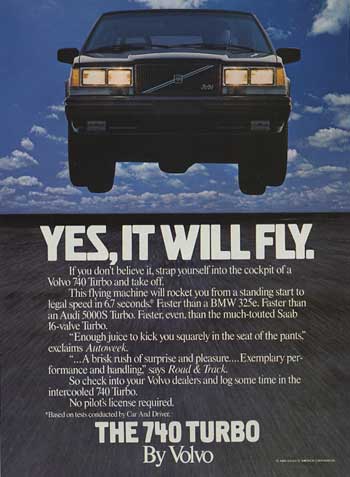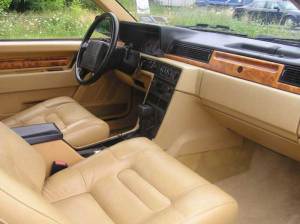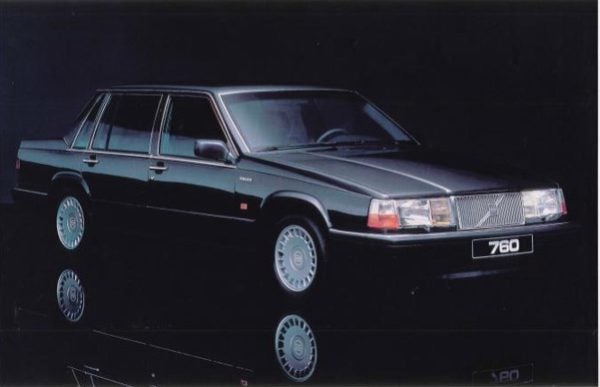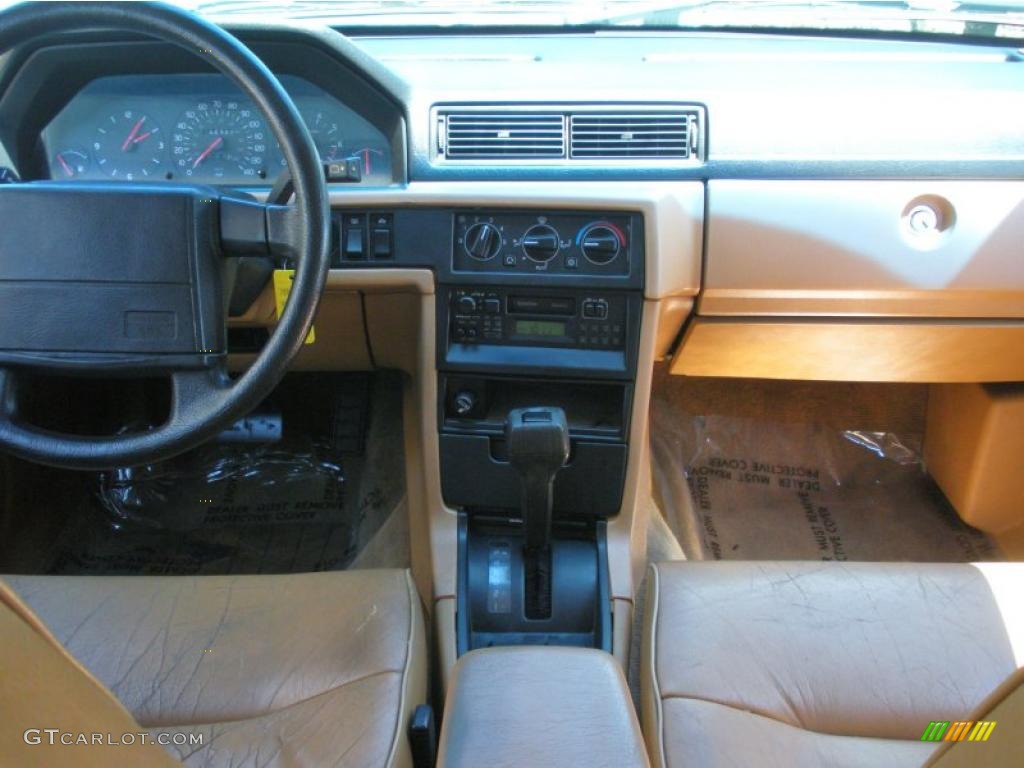Automotive History: Volvo 700 Series 1982-1992
What are they? And why are they significant?
Affectionately known as Bricks by their owners and Volvo enthusiasts, these cars were Volvo's most luxurious, most modern cars in the 1980s. And they built 1,430,000 of them, all over the world. The 700 series were a great success for Volvo, bringing in new customers and keeping the Volvo faithful content as well. You could get a sedan, wagon, even a coupe. They all had traditional Volvo virtues: safety, comfort, and reliability. In many ways, though, the 700 series was also trying to break free of Volvo stereotypes, such as being stodgy, slow, and boring. The 740 Turbo in particular was striking in appearance, with blacked out trim and 16" wheels. The Turbo had a higher output engine than the stock model 740, and other upgrades that made it a serious performance car in its day. Then there was the 780, the flagship coupe model. This car had Italian styling by Bertone, and an interior to rival the best from all over the world. Volvo 700s had broad appeal for luxury car buyers, limited only by the size of the your wallet. There have been few model lines for Volvo, or any other company for that matter, that could meet anyone's needs, with so many choices. Not unlike the classic American cars with 20+ models varying from basic to over the top. Today these models have undeniable curb appeal, with timeless, classy styling and a great platform for modification for car enthusiasts.
However, like so many Volvos, the 700s owe much of their success to the venerable 240. The 240 laid the groundwork for reliable mechanicals, safety, and logical design. So the 700s had some big shoes to fill, and they sold well, and went on into the 1990s in the form of the 940. However, in a great irony, the 240 lasted one year longer than the 700 series, having been around for 18 years vs. the 10 years of the 700 series. In any case, the 700 series is significant because it got Volvo through the 80s, a tough decade for cars to say the least, and elevated Volvo to new levels of performance and style. Dudley Moore understood what the 700 series was all about in the 1990 film Crazy People, "They're boxy but they're good."
Pre-Production History :
The development of the 700 series began in the mid 1970s. In 1975, Volvo stopped production of the 164, which had been their flagship model, designed to compete in the luxury car market (BMW, Mercedes, and Jaguar primarily.) After that, the void left by the 164 in Volvo's lineup was filled by V6 powered luxury versions of the 240. These cars, in wagon, sedan, and coupe form, were produced until 1981. They were luxurious, but couldn't shake the stigma of the 240 as a plain jane, near luxury car. The 260 series, as they were known, weren't enough to compete with brands like BMW and Mercedes. Volvo needed a real successor to the 164, so it could compete in the luxury car segment and have a more modern car for the 80s market. So, Volvo came up with a sedan that was shorter and wider than the 240, but with a longer wheelbase. This longer wheelbase would give them a more comfortable ride. The extra width made for a better handling car as well. They decided to use the engines of the 240 (4 and 6 cylinder) and a few other mechanical parts, but most of the car was all new. The design was done by Jan Wilsgaard, who put 50 designs forward for the new model before the final one was approved. A lot of styling influence can be seen in the Volvo Concept Car of 1980. Volvo decided to call their new flagship the 760 GLE (GLE is a trim designation, for Grand Luxe Executive), and the car was ready for production by 1982.
Facts and figures:
The 760:
In 1982, 760 production began for the 1983 model year here in the U.S. The 760 GLE had a 156hp 2.8 liter V6 engine jointly developed between Peugeot, Renault, and Volvo, and made in France. This engine was not known for it's reliability, compared to the 2.3 liter 4 cylinder Volvo engine. Problems with the V6 were fixed by 1988, then they were OK. Transmissions were a 4 speed automatic, or 5 speed manual. Performance was good with the V6 (0-60 in 10 seconds and top speed of 118 mph) and comparable to a BMW or Mercedes with similar size engine (528 or 280). Handling and braking were notably good for the time. The 760s were loaded with luxury features (see the picture below) that set them apart from lower models. The debut model of the 700 series was a success, with almost 30,000 760s produced in 1983. Production numbers went down gradually after the introduction of the 740, making the top of the line 700 even more exclusive. There was a turbodiesel 6 cylinder version produced from 1983-1985 as well. In 1984, Volvo introduced a Turbo Intercooler version of their 4 cylinder engine, which made the car a real rocket for it's time. The Turbos could go from 0-60 in around 8 seconds, with excellent road manners. This performance carried over to the 740 Turbo, introduced in 1985. The turbo 4 cylinder cars were competitive with many 6 cylinder cars of the era. A wagon was introduced in 1984 as well. In 1988 the car was refreshed with a new front end, interior, and multi link rear suspension. 1990 was the last year for the 760.
The 740:
The Volvo 740 was introduced in 1985 as a lower priced, 4 cylinder version of the 760, that would fill the price gap between the 240 and 760/780. This and the 240 were the key models for Volvo in the 1980s. The 740 was introduced with two trim levels. The luxury model was the GLE, and the performance model was the Turbo. After the first year, the 740 evolved into a dizzying array of trim levels, many lasting only a short time. In 1986 only there was a 6 cylinder turbodiesel version of the GLE. A sedan or a wagon were the body style choices with any of the above trims, from start to finish. The drivetrains in these cars were identical or similar to the 240's, so they continued Volvo's reputation for reliability with added luxury and style. The 740 was a great seller for Volvo throughout it's life, with production numbers frequently topping 100,000 a year for GLE models alone. In 1989, a base model GL was introduced which has slightly less equipment than the GLE but still a lot of bells and whistles for the money. This is the car I own. In 1989 Volvo also introduced a 16 Valve version of the 740, with a 153 hp 4 cylinder. These models only lasted for 2 years, '89-'90. In 1990 Volvo refreshed the 740, with a new front end. The following year the interior was revamped as well to match the new 940. 91 also saw the release of the limited production 740 SE, a fully loaded Turbo 740 with a bodykit and color matched trim. The new for '91 940 was itself an updated 740. Confused yet? The early 90s Volvo lineup was cluttered to say the least, with 3 cars that were just about identical mechanically, but with different bodies and interiors. 1992 was the final year of the 740, with only a base sedan or Turbo wagon available.
The 780:
The 780 was the 2 door version of the 700 series. It was a very special car, designed and built by the Italian styling firm Bertone. Some components in the car were borrowed from the 700 series parts bin, mechanically speaking, but cosmetically most of the car was unique. 780s were limited production (8,518 built), and about twice the cost of a loaded 760 GLE. and The interior had special seats, wood trim, and was as loaded as a 760 GLE. Like the 760, there were GLE (with PRV V6) and Turbo trims, the Turbo being the faster version. And if the standard Turbo wasn't quick enough, Volvo had what they called at Turbo+, which pumped more boost into the turbo 4 cylinder engine. This engine was good for 175 hp. The 780 got the multi link rear suspension from the 760 in 1988.
Evolution of the 700 Series, Timeline:
1983: 760 GLE



1985: 760 Turbo, Wagon body style, 740
(740 GLE sedan)
(740 GLE Wagon)
 (760 Turbo Intercooler)
(760 Turbo Intercooler)(740 Turbo wagon)

(740 Turbo sedan
1986: 780 Bertone


1988: 760 revised

1990: 740 revised
1991: 740 SE, revised interior


What's their value today?
Financial value: Single digits. They were made in great numbers, and few of them are collectible, except for the 760 and 780. However, the turbo models are gaining a real following which makes them valuable to enthusiasts. They can make serious power with modifications. These cars are also popular for V-8 swaps. They are relatively simple cars, and easy to work on, reliable except for a few bugs that show up with higher miles. These days I still see them in the hands of first time drivers, enthusiasts, and even original owners. They represent a good value for an entry level classic car with loads of class and a satisfying driving experience.
Something I have to admit:
I own a 1989 740 GL and love it. To me it's everything a Volvo should be: solidly built, reliable, comfortable, and sure footed on the road. Great handling and brakes. It's not a rocket with the 114 hp, 2.3 liter four cylinder, but it keeps right up with traffic, and takes me down the highway at 75+ mph with ease. And even my basic model has all the modern conveniences of newer cars. I like the room inside and the cavernous trunk as well.



0 comments:
Post a Comment